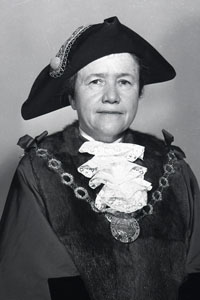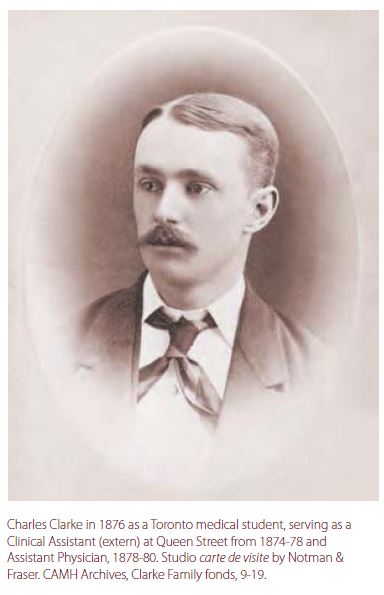 Eugenics and Juvenile Emigration
Eugenics and Juvenile Emigration
Charlotte Whitton and Dr. Charles Kirk Clarke
“Our full strength and resources are bent to the task of keeping this country strong, virile, healthy, and moral and we insist that the blood that enters its veins must be equally pure and free from taint.”
This quote is from one of Canada’s most famous women, Charlotte Elizabeth Whitton who became the first female mayor of a major Canadian city in 1951 and was re-elected by the citizens of Ottawa four more times until she was defeated in 1964. She continued as an alderman until 1972. Whitton was a strong advocate of the equality of women and helped to greatly improve mother’s conditions and was very involved in child and social welfare.
Before becoming Mayor, Whitton was secretary of the Canadian Council on Child Welfare and was then promoted to its Executive Director from 1926 to 1941. As well as being a member of the Imperial Order of Daughters of the Empire, she was also an inexhaustible writer, on subjects including the effects war had on women. She was made delegate of Canada to the Advisory Committee on Social Questions of the League of Nations.
Yet, Whitton also strongly supported the eugenic beliefs sweeping North America like those of Dr. Charles Kirk Clarke, a prominent Canadian psychiatrist, asylum superintendent, educator, and hospital administrator. Clarke believed that European nations were trying to get rid of their insane and genetically defective citizens by sending them to Canada. Whitton agreed with Clarke that morality and criminality were inheritable and led her to oppose the immigration of undesirables. By allowing these types of immigrants into the country, they could pose a national menace by producing unhealthy and degenerate offspring.
To Whitton, the only desirable immigrants to Canada were persons of Anglo-Saxon birth who were able to move to Canada without government assistance. Unwelcome immigrants she concluded were those of Oriental, Armenian, Jewish, Central European, or lower-class British heritage. Especially because juvenile immigrants were impoverished, abandoned and required assistance, she deemed all juvenile immigrants to be physically, morally, and socially degenerate.
Whitton’s champion, Dr. Clarke, along with others, founded the Canadian National Committee for Mental Hygiene (CHCMC) in 1919 which was initially meant to provide psychiatric help to returning soldiers. However, the CNCMH turned its interests to screening immigrants who were seen as a source of having mental disorders.
initially meant to provide psychiatric help to returning soldiers. However, the CNCMH turned its interests to screening immigrants who were seen as a source of having mental disorders.
Clarke used links of feeble-mindedness to immigration, by using questionable sources released in the United States, much of which was part of the eugenic movement, and Whitton was all too happy to have scientific ‘evidence’ to endorse her ideas of immigration policies.
Clarke also used statistical findings from his Toronto clinic about immigrants, currently seen as debateable and unrepresentative, but at that time were readily received. The Public Health Journal published his condemnation of the “defective immigrant” in 1916 and in 1918, his theory linking ‘feeble-mindedness and criminality’.
As a result of the efforts of Clarke and the CNCMH, in 1919 Parliament approved amendments to the Immigration Act but Clarke was dissatisfied as the Act relied on civil servants to make admission decisions.
In 1920, after learning that a party of Barnardo children were arriving, the first since the end of the War, Clarke staged a public demonstration to reinforce his preferences and arguments. Spurred on by him, an array of medical experts put them through tests. The children passed with flying colours.
Nevertheless continual pressure on the government by Clarke and many other psychiatrists, reformed the system allowing medical inspectors to be posted at the point of embarkation in 1928. As Clarke died in 1924, he never experienced the realization of this goal.
Whitton resigned from the Canadian Council on Child Welfare in 1941 and alongside her stints as Mayor advocated for women’s rights in the workplace.
At the end of her career, she was known for criticizing child allowance policies, as she believed they promoted the ‘less desirable’ citizens to have more children.
